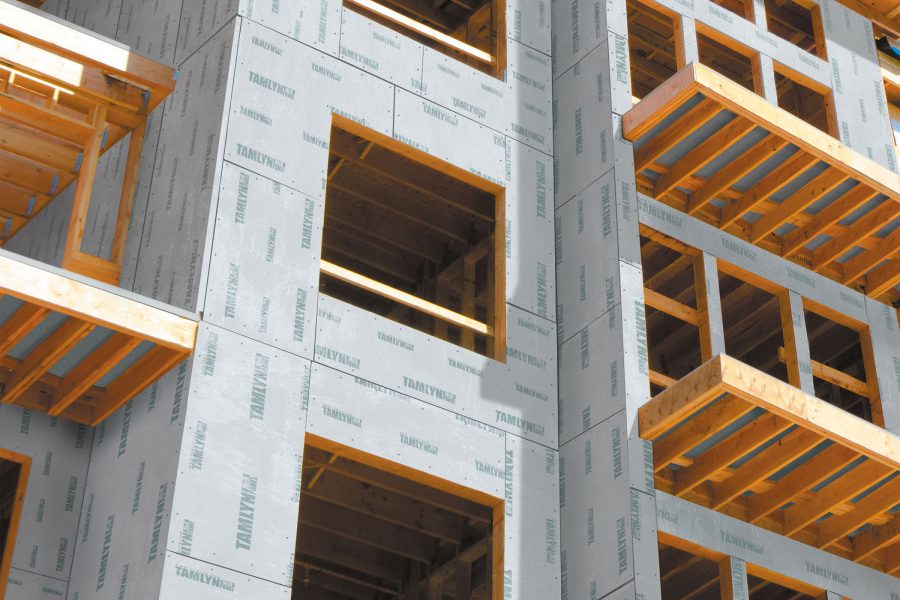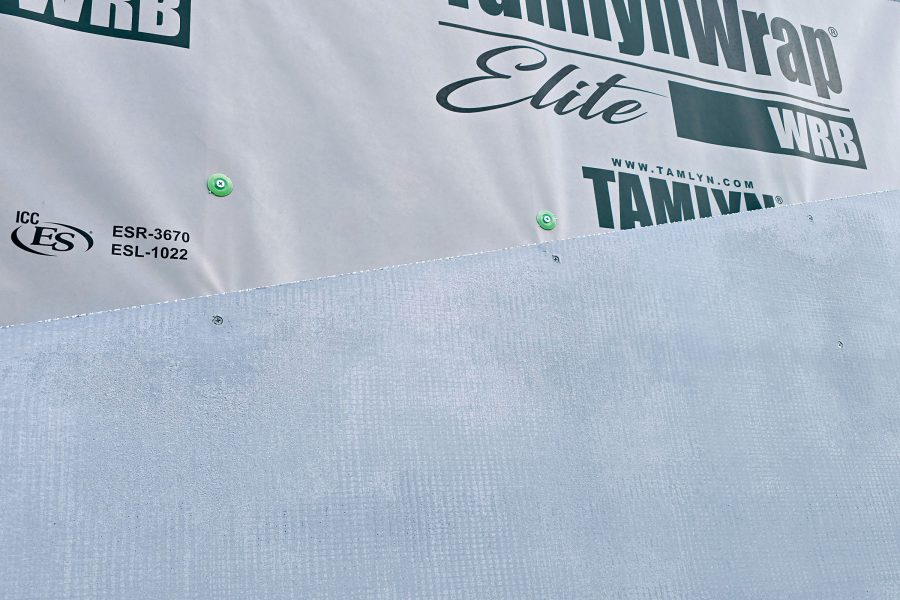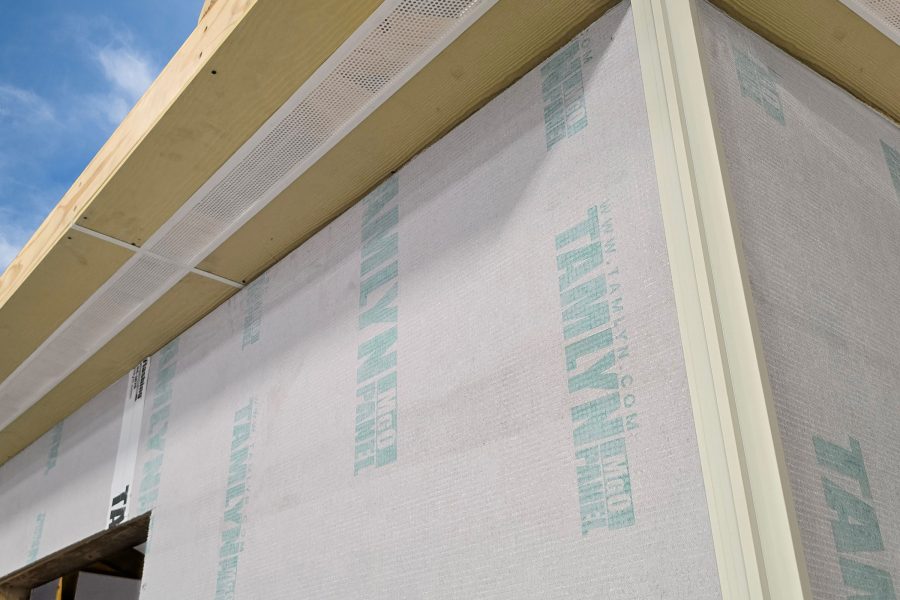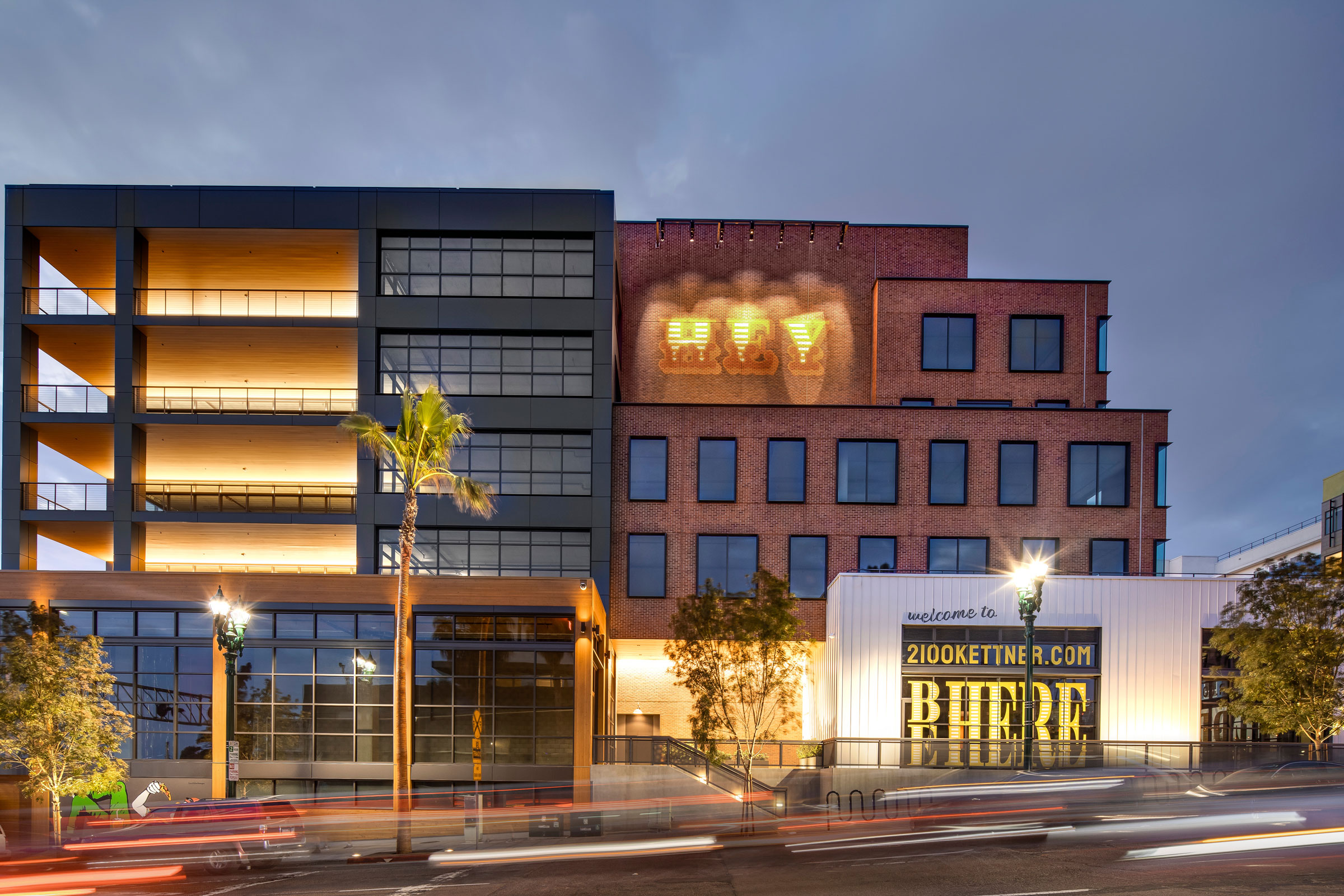Story at a glance:
- A project’s structural sheathing can add up to increased fire resistance.
- Manufacturers like TAMLYN are hyper-focused on providing fire and water resistance for buildings.
- The MgO high-performance construction panel are rated as non-combustible and easily integrated into wall, floor, and roof systems to mitigate fire spread.
Wildfires are getting worse. Forest fires now burn more than twice as much tree cover each year as they did two decades ago, according to the World Resources Institute. An estimated 88% of wildfires in the US are caused by human activity, according to the Pacific Biodiversity Institute, and 94% of wildfires begin within half-mile of a roadway.
“The severity and the occurrence are increasing exponentially,” says Stacey Olson, director of sustainability and global wellness leader at Gensler. As the severity and occurrence of wildfires increases, action is critical, Olson says. She’s become all too familiar with fire, as she’s based in the Los Angeles office, near some of the continent’s most devastating wildfires in recent years.
Olson says fire has long been a part of nature, but urban wildfires are increasing all over the globe. “It’s something we need to start paying stronger attention to—especially considering the materials we design with and how and when we create areas that provide for natural fire breaks,” she says. If a fire does occur, it’s helpful to know that a building has used the most sustainable, low- or nontoxic materials.
Design for Fire Resistance

TAMLYN’s MgO high-performance construction panel is a top solution for a range of interior and exterior applications. Photo courtesy of TAMLYN
Manufacturers like TAMLYN are hyper-focused on providing fire as well as water resistance for buildings. Protection and resilience against fire in a cost effective way is driving people to turn to new solutions like the MgO high-performance construction panel launched by TAMLYN in 2024, according to Xuaco Pascual, building science director at TAMLYN. Devastating recent fires in the US highlight the need to protect people and property, he says.
“This is driving code changes in construction that can mitigate fire damage as well as limit their spread from one building to the next. As developments expand with zero lot lines or expand into the Wildland Urban Interfaces, a more comprehensive approach than simple suppression is necessary to address the challenges of fire spread within buildings and throughout communities,” Pascual says. “MgO panels can serve to meet the requirements of the International Fire Code, Wildland Urban Interface Code, or other local building requirements that focus on resilience against fire or storms.”
Olson also emphasizes the need for more fire suppression methods. Ensuring building materials aren’t loaded with chemicals of concern is important, too. “How are we designing for fire resistance?” she asks. “We don’t need to pack the building full of fire retardant chemicals.” 2100 Kettner in San Diego is a six-story mixed-use development that uses a combination of brick, timber, and concrete.
Smoke damage and flooding can lead to more adverse effects. “After the fires in LA subsided we had floods. Any fire retardant chemicals still in the streets were then washed throughout the neighborhood, into storm drains and into the ocean. Then you get things like eutrophication and all sorts of damage to those ecosystems and also the fishing market. Do we eat these fish? We have to think about the whole life cycle from fire to flood and what that looks like.”
Their use is growing in fire resistant assemblies, fire rated partitions, data centers, elevator shafts, common areas, museums, theaters, and more.
Pascual says MgO panels contain “no nasty chemical additives or off-gassing associated with fire resistant treatments or other additives” and are a cost effective measure in the development of fire resilient construction. “Specific to building applications, MgO panels offer the structural properties of wood and the fire performance of gypsum or concrete panels but without the moisture sensitivity of wood and gypsum or the weight challenges of concrete,” he says.
“Additionally, they do not have harsh chemical additives such as fire retardant treatments or toxic ingredients found in other sheathing products.”
As a sheathing product, MgO panels are considered inert, environmentally sustainable, and can be cut with standard tools and equipment and easily integrated into projects, Pascual says. “Their use is growing in fire resistant assemblies, fire rated partitions, data centers, elevator shafts, common areas, museums, theaters, and more.”
He says most MgO panels are rated as non-combustible and easily integrated into wall, floor, and roof systems to mitigate fire spread within a building. He says the panels also have the benefits of structural performance, resistance to decay or expansion from exposure to moisture. They can also serve as a fastening base for cladding, are resistant to fungal growth and termite resistance, and have good acoustics.
What is MgO?

TAMLYN wrap. Photo courtesy of TAMLYN

The MgO high-performance construction panel launched in 2024. Photo courtesy of TAMLYN
MgO, or magnesium oxide, is mined and produced as a powder, Pascual says. The well-known inorganic compound is stable at very high temperatures and abundantly available. In construction it’s commonly used in high temperature applications like fireproofing and cement applications.
“MgO is an abundant compound that’s been used in construction applications for centuries. MgO was used in the mortar for building the Great Wall of China as well as in Roman construction. It has been used throughout the years and in more modern construction, including the Brooklyn Bridge as well as the Taipei skyscraper in Taiwan. In the 20th century MgO use in cement was reduced for cheaper alternatives such as Portland cement.”
He says MgO panels are suitable for Type I-V construction as exterior or interior wall sheathing, flooring underlayment, subflooring, and roof sheathing. “It should be considered as an alternative to fire retardant treated wood sheathing, gypsum, or concrete panels.”
For example, he says a combined structural and fire resistant MgO panel can be compared to traditional gypsum, which has good fire resistance but does not provide structural performance, performs poorly against moisture, and is not a fastening base for cladding. Also, fire retardant treated (FRT) wood panels carry the concerns of moisture degradation, chemical interactions, and toxic ingredients or off-gassing, he says, and while concrete panels may have excellent fire performance, weight cost are considerations.
Pascual says MgO panels should also be considered for:
● Any NFPA 285 assembly as a non-combustible material substitution
● Any 30-minute, 1-hour, or 2-hour rated wall assembly
● Anywhere wildfires are likely
● Zero lot line, cluster, or urban developments
● Flooring underlayment as a substitute to wet applied gypsum
● Storm resilience (strength and moisture resistance)
● Weight savings vs traditional concrete
● Type I-V new or retrofit construction
● Protecting critical assets from fire spread
● Substitution for any other non-combustible sheathing product
While MgO panels are resistant to moisture decay and swelling, Pascual says designers and engineers should understand that they are a porous material and still require a moisture protection layer in exterior applications.
“This protects adjacent sensitive materials from any moisture exposure or transfer. The protection layer can be any quality mechanically attached, adhered, or fluid applied WRB layer. Some panels have an integrated protection layer on the external surface that may require special detailing at seams and penetrations. As with any system, the key consideration is using compatible materials and following manufacturer recommendations.”

